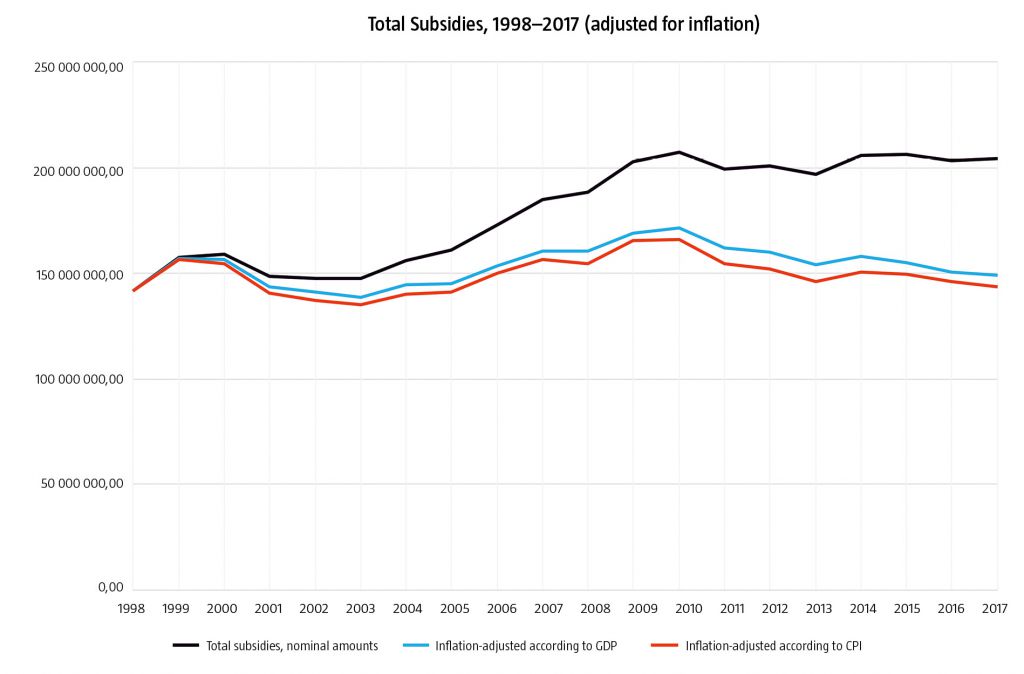An Analysis of the City of Vienna’s Reports on the Arts and Culture, 1998–2017.
Norbert Hofer, a doctoral candidate at the mdw, provides a glimpse into his work in the field of cultural institutions studies and describes how cultural funding by the City of Vienna has developed since 1998.
A historical outline can provide us with insights into the organisational development of funding for the arts and culture by the City of Vienna, including as it relates to political developments.
Starting from the terms “art” and “culture”, research was done on the cultural policy positions, objectives, and ideas of the Vienna City Council’s various political parties—which, as one might expect, differ strongly. An exhaustive chapter portrays the cultural policy positions of Austria’s political parties based on their party programmes and the Viennese coalition agreement; this chapter is rounded out by a timeline that shows the respective successions of governments on the federal and provincial levels as well as occupants of the relevant posts.
All this provides a basis upon which to pose questions regarding the extent to which the respective political positions were reflected in the funding provided, what structural problems influence funding practice, and whether a relationship can be made out between the actual practice of Vienna’s funding for the arts and culture and the social and economic situation of artists.
The city of Vienna makes a point of repeatedly and emphatically stressing the importance of (free) access to the arts and culture for all, which raises questions as to the social significance of culture as such and the extent to which it actually is possible to participate in cultural life. Here, this dissertation project takes important cues from the ideas of French sociologist and social philosopher Pierre Bourdieu, who—in his “field theory” and with his terms “habitus” and “cultural capital”—dealt centrally with social inequality and, as part of this, with access to the arts and culture.
Due to the volume of data and the multitude of institutions that have received funding, quantitative analysis was used as a research method in conjunction with targeted interviews with experts or with individuals professionally involved in the cultural field.
To this end, this project’s preliminary work included the compilation of a database with over 40,000 entries from the City of Vienna’s annual Arts and Culture Report (Kunst und Kulturbericht), taking into account the report’s editions between 1998 and 2017. On this basis, a significant statement—not just as a general overview, but also on the level of the individual institutions—can made regarding the types and amounts of funding that were granted.
Preliminary Findings
The development of the City of Vienna’s corrected and consolidated funding figures shapes up as follows: between 1998 and 2017, funding rose in nominal terms from EUR 141 million to 204 million. For the purpose of objective comparison, however, amounts over such a long period of time have to be adjusted for inflation. There are two basic ways of doing this: according to the consumer price index (CPI) or according to the development of gross domestic product (GDP) – see table. Adjusting these figures for inflation indicates that funding today remains at practically the same level as in 1998.
But since there have been massive shifts between funding categories over the years while, at the same time, numerous institutions have received funding from multiple categories, analysis of these categories (as defined by LIKUS, the Länderinitiative Kulturstatistik [Provincial Initiative on Cultural Statistics]) produces results that are of only limited significance. Therefore, an objective impression can only be obtained by conducting analysis on the level of the individual organisations.
During the 1998–2017 period, the share of funding that want to large organisations increased by around 15%—at the expense of all other funding applicants. Each year saw a total of between 4,000 and 5,000 institutions funded. Of these, 31 institutions received annual funding in the amount of EUR 1 million or more. These 31 institutions consumed around 78% percent of total funding. One could also express this differently by saying that the six most highly funded institutions receive slightly more money than all others combined.
Furthermore, it is especially smaller organisations that are negatively affected by a number of structural problems.
Examples here would include the perennially lamented lack of spaces for cultural projects as well as the only marginal media coverage and low media presence of small cultural organisations.
The Limits of Analysis
In some areas, the lack of data results in blurry impressions—a fact that nonetheless does not significantly impact the overall findings. With respect to the effects of cultural funding on the income situations of cultural workers, for instance, there exist certain indications—but these cannot be expressed in concrete figures. In order to do so, it would be necessary to analyse the annual reports of a statistically significant number of cultural organisations—which would, however, go far beyond the scope of this project. But it is possible here to cross-reference relevant investigations (such as various editions of the Report on the Social Situation of Artists in Austria [Bericht zur sozialen Lage der KünstlerInnen]) as well as other calculations in order to draw some conclusions.

